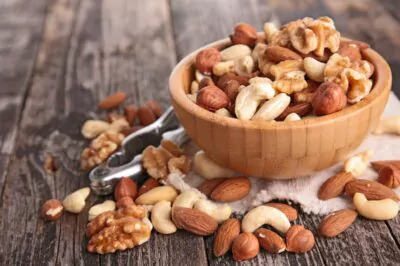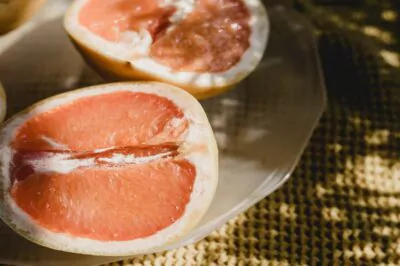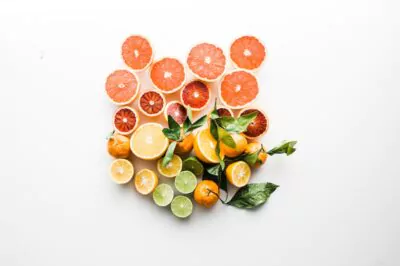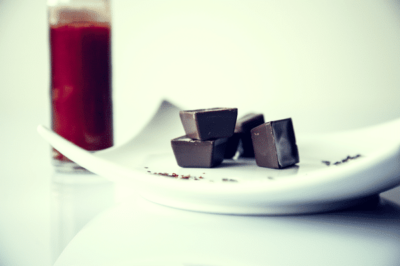Table of Contents[Hide][Show]
Do you find yourself running low on energy in the middle of the afternoon? When you get home from work, do you find yourself sinking into the couch, just drained from the day? One of the easiest changes that you can make to your routine is adding a few new ingredients into your daily routine. You don’t need to run out and buy a shelf full of supplements to get that pep back in your step. The key is making a few subtle shifts that will make a significant difference in the way that you feel, day in and day out. Take a look at six things you can add to your nutritional routine and feel better all day long.
1—Fish
Fish have many health benefits, and the one you may be most aware of is the Omega-3 fatty acids that they contain. Those help you reduce the “bad” (LDL) cholesterol levels in your bloodstream. However, you may not have known that fish can help give you a boost of energy too. Take salmon, for example. It is rich in the B vitamins, especially B-12. That vitamin has been shown in studies to increase energy levels and help people fight fatigue. A grilled salmon steak that you toss into a food container and take to lunch the next day is just so much better for you than running out of the drive-through for another burger.
Salmon is also a fish that contains Vitamin D—not many natural sources of this nutrient are out there. Some studies show that Vitamin D can help you fight fatigue and gain a sense of energy. You can also get Vitamin D from exposure to sunlight, so if you take a walk outside after having salmon for lunch, you can double the benefit for your energy level. Fish represent a healthy change in your diet in a number of ways, but boosting your energy levels can keep you from snacking too much and also keep your sugar levels more consistent.
2—Leafy Greens
If you remember the cartoons of the 1970s and 1980s, you remember the sailor Popeye reaching for a can of spinach whenever he needed extra strength to beat up Bluto, who was always coming around and trying to steal his girlfriend, Olive Oyl. It just took some spinach to make his biceps bulge and turn him into a whirling dervish. In more recent decades, green vegetables, particularly of the leafy variety, have tended to disappear from diets.
Of course, not everyone likes the flavor of spinach, particularly when it comes out of a can. It makes just as good a salad base as lettuce does, but even if you can’t make yourself like spinach, there are other leafy greens that offer the same nutritional boost that gives you a burst of energy. Broccoli, kale, mustard greens, watercress, bokchoy, Napa cabbage and collards are all leafy greens that you can cook in a variety of ways, and then you can also eat lettuce, arugula, endive and chicory raw and get similar benefits.
How does the energy boost from leafy greens work? Well, the fiber that you get slows down your digestion, so you feel full longer. You won’t get that crash-and-burn that you get from eating high-carb, low-fiber foods. You also get a lot of the nutrients that a lot of people miss in their diets—folic acid, vitamins A, C, E and K, zinc, phosphorus, potassium, magnesium, iron and calcium. All of these can help you build energy if you have deficits in any of them.
3—Fruits
If you find yourself dipping in your energy levels, fruit gives you a way to boost your blood sugar levels relatively quickly—but also stably, so that you’re not going to crash 30 minutes later, like you might if you eat a candy bar or a bag of chips. The fiber in the fruit makes the digestion process slower and steadier, which means that the energy you get moved into your bloodstream in a slower process. Your energy levels increase, but then level out. Some of the best fruits to reach for when you feel that drop in energy are peaches, plums, cherries, oranges, apricots and nectarines. Cherries are also high in antioxidants, so you’re getting two benefits with one handful. Apples are a good choice for those who want to find a happy medium between low-carb living and feeding that need for energy.
4—Nuts
Much like some of the other items in this list, nuts give you a jolt of protein. By adding protein instead of simple carbs, you get a caloric boost when you’re feeling tired, but you don’t get the fast flash of carbs burning followed by a letdown. Walnuts are a great choice, because not only do you get the zap of protein, but they have more omega-3 fatty acids than any other nut, which makes them healthy for your heart. They also have just about double the antioxidants of any other nut out there. Some other good choices include almonds, pistachios, peanuts, cashews (in small quantity) and pecans. You’ll feel full longer, and the energy that you feel will last longer too.
5—Water
Water makes up about six pounds out of every ten pounds of our body weight. When we don’t drink enough, we start to drop in terms of energy. If you’re finding yourself low on energy at work in the afternoon, and you aren’t in the habit of drinking two or three liters of water each day, don’t go fill that coffee mug again. Instead, get a bottle of water, and you’ll see your energy levels go up. Your metabolism increases too, which makes weight loss easier.
6—Dark Chocolate
I know—you didn’t need ANOTHER excuse to eat chocolate. But dark chocolate has fewer calories than the milk chocolate variety, and you still get that natural caffeine zip. It boosts your endorphins so that you feel that rush of energy. Just make sure to keep your servings responsible, because some forms of chocolate, even the dark variety, can bring a lot of fat and/or calories with them.
Author Bio: Lydia Mattern, NASM Certified Personal Trainer
Lydia is a NASM Certified Personal Trainer at fitnessgoals, with a passion for writing and a love for chocolate. She enjoys long walks with a breeze and finding ways to make dessert healthy.







